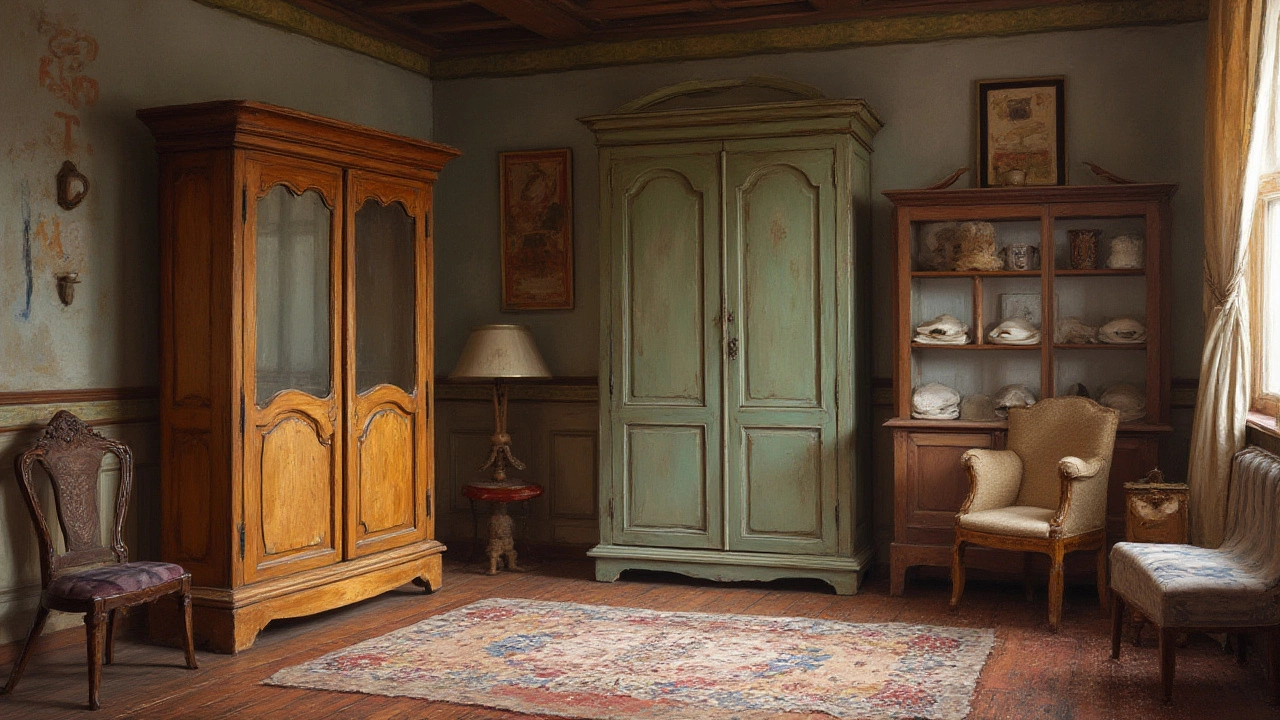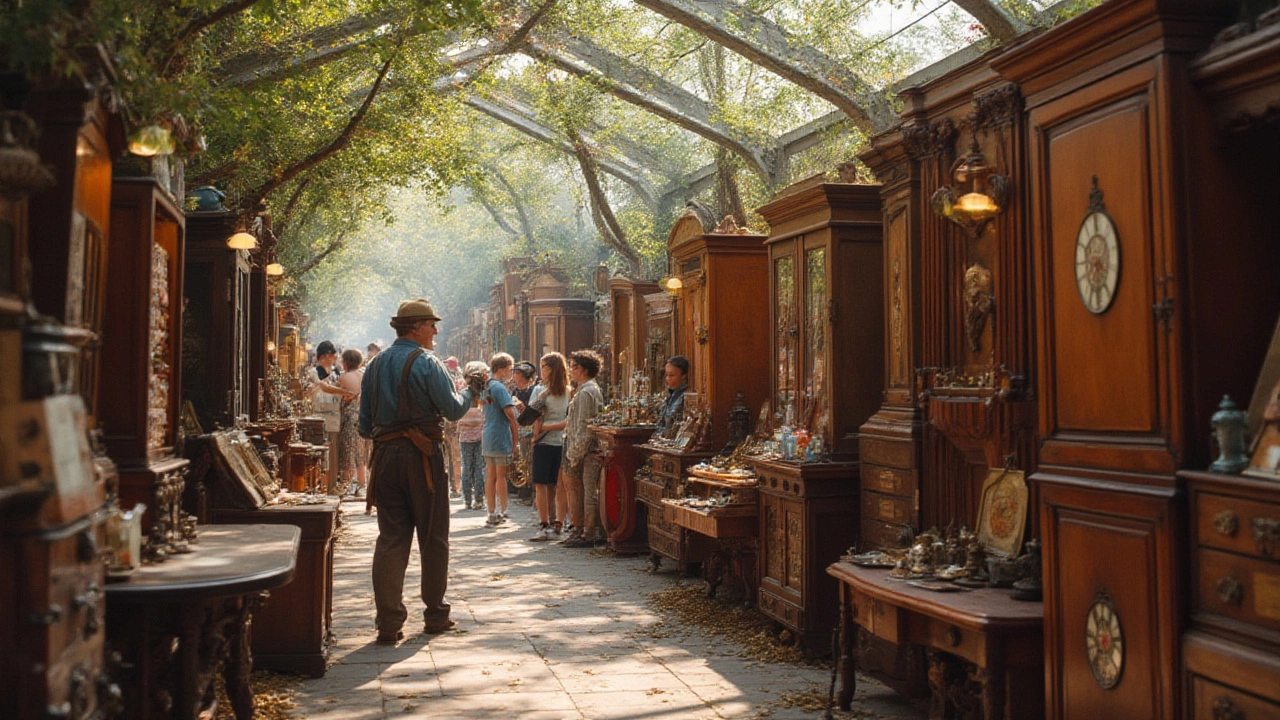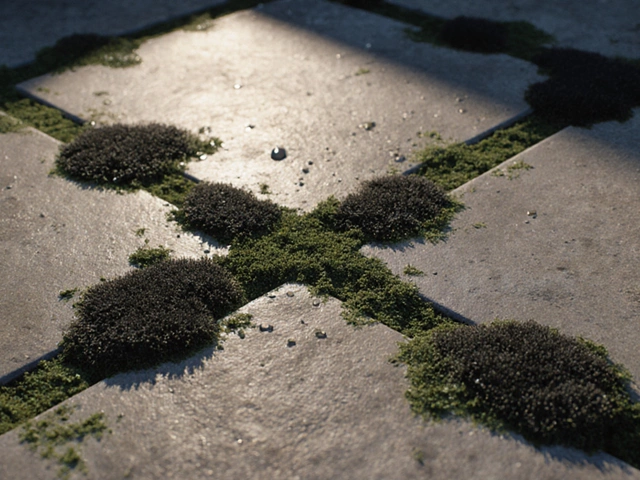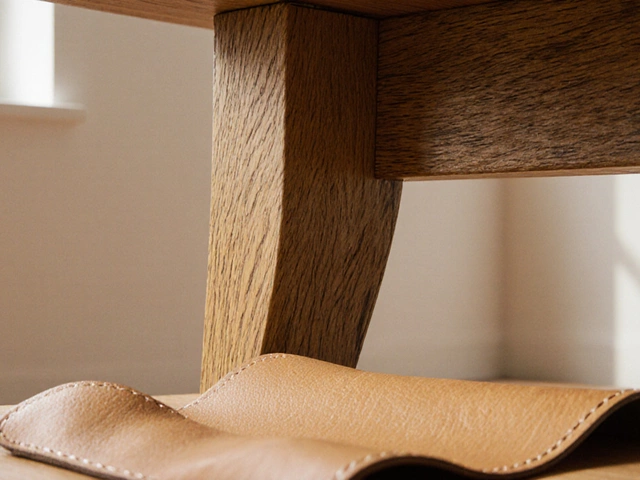Think about the time before flatpack wonders and built-in wardrobes. Imagine opening a wooden door, thick with the scent of cedar, into a sturdy old closet that witnessed generations come and go. Before we had the word ‘closet’ in the sense most Brits use today, families tucked away their everyday clothes and treasures in impressively crafted storage furniture that’s still making design lovers swoon in 2025. But what did people actually call those old closets? Why did these pieces matter so much, and how did they shape the way we think about storage today?
The Names of Old Closets: From Armoires to Presses
Let’s get straight to it: old closets had names like armoires, wardrobes, presses, and chifforobes. It’s a detail that often confuses folks rummaging through vintage shops or old property listings. If you stumble upon the word “armoire,” you’re probably looking at a grand, double-doored piece, French in origin, standing tall in stately homes since the late 1600s. Armoires started as weapon storage—the word literally means “arms” in French—but over time, they turned into the go-to furniture for hanging and folding clothes, especially in homes without built-in closets.
Step into a Georgian or Victorian house up north and you’ll likely run into a “wardrobe.” These are what most Brits called the large free-standing storage units once fitted with hooks and rails for hanging coats and dresses, sometimes divided for shelves, hats, or even shoes. “Wardrobe” comes from the Old French “garderobe,” which originally referred to a room for keeping clothes, later shrinking down to the furniture we know.
In the English countryside, especially in Yorkshire, you’ll often hear the term “press.” A linen press is a narrower, usually less-ornamented cabinet designed for linens and folded clothes. Some older houses still boast these, typically with shelves behind paneled doors, sometimes in situ built into alcoves. Then there’s the “chifforobe,” an American mashup (mainly early 20th century) that combines drawers (“chiffonier”) with a wardrobe section. If you’re collecting or buying, knowing these terms will save you a lot of guesswork and help you chat fluently with antique dealers.
A Look Back: The Evolution of Storage Furniture
The story of old closets is really the story of how people have dealt with clutter—and what that clutter revealed about them. Before family homes had rooms dedicated to storage, people used chests or trunks, plonked at the foot of the bed. These weren’t just for clothes; they were for anything precious, from foodstuffs to jewellery. As possessions multiplied, so did the need for smarter storage. By the 17th century, the wealthy had armoires and tallboys (a sort of tall chest of drawers) to keep up with ever-more elaborate wardrobes.
It wasn’t until the Victorian era that wardrobes really took off in England. Stylish and imposing, they often stood over six feet tall, fitted with carved cornices and mirrors so heavy you’d feel the back ache just looking at them. These were as much about showing off as storing things. The types kept evolving: Edwardian wardrobes got lighter and slimmer, and by the 1930s, many British homes had built-in cupboards squeezing out the need for gigantic, standalone closets.
Interestingly, in other parts of Europe, like France, the armoire stayed king. Many 18th-century armoires, particularly those from Provence, feature regional carvings—sunflowers, hearts, or even the family crest. In rural Ireland and Scotland, the “linen press” was prized, especially when family linen became a sign of prosperity. The function of all these old closets was shaped as much by design and craftsmanship as by fashion. A new style of dress, or an extra petticoat, could mean a new compartment inside that old wardrobe.

Identifying and Dating Antique Closets
If you’re eyeing an old piece at a barn sale or inherited a mysterious cabinet, it’s worth knowing how to tell your armoire from your press. Start by inspecting the wood. Georgian and Regency wardrobes, for instance, often used rich mahoganies, sometimes with inlaid veneers. Victorian ones, on the other hand, go for oak or walnut, usually with a more painted or varnished finish. French armoires, especially from the Louis XV and Louis XVI eras, are almost always made of solid oak or fruitwood and are heavy as a grand piano.
Look at the joinery. Pre-1830s wardrobes relied on big wooden pegs and hand-cut dovetails, while those made after the rise of industrialization feature machine-cut joints. Panel styles help too: earlier English pieces have flat panels, while Victorians preferred festooned or beveled fronts. Always check for original hardware. Brass escutcheons with intricate detail? Likely a Georgian or French antique. Bakelite knobs or pressed tin plates? Probably an early 20th-century piece.
Labels, stamps, or maker’s marks can clinch it. Big names in British furniture, like Maple & Co or Gillows of Lancaster, are sometimes stamped discreetly inside a door or drawer. French armoires were occasionally signed by cabinetmakers, especially in regions like Brittany. Don’t forget to measure: Old closets were made for much shorter people, so their rails and shelves are often set lower than modern expectations. Keep your phone handy for photo comparisons while searching shops in Leeds or York—local auction houses often provide online reference guides for common antique closet styles.
Why Old Wardrobes and Armoires Still Matter Today
Here’s the thing: people love old wardrobes not just because of their practicality, but because of the stories they carry. It’s hard to replicate the feeling of pulling open a heavy oak door and seeing old brushstrokes of wax, or finding pencil marks from a child measuring their height decades ago. Antique closets offer a touch of drama in bedrooms stripped bare of character by flatpack furniture. High-end designers like to bring these pieces back in fresh interiors, mixing 18th-century armoires with ultra-modern beds in ways that instantly energise a room.
They’re tough, too. Most old closets were built to outlast generations. If it’s survived this long, it’ll likely keep going if you treat it right. Practicality is another big draw. Modern wardrobes struggle to live up to the solid craftsmanship of old freestanding pieces. Their capacity often eclipses flimsy flatpack units, and their shelves and rails can be adapted for shoes, handbags, and even TVs.
There’s an eco-angle too: Buying vintage saves old trees and skips landfill. If you pick up an old wardrobe at an auction or local sale, you’re preserving a bit of history and saving a hunk of carbon emissions. EU data suggests the reuse of a large wooden armoire rather than buying a new flatpack can keep up to 150 kg of CO2 out of the atmosphere. That makes them as green as they are gorgeous.
| Type | Origin | Main Material | Key Features |
|---|---|---|---|
| Armoire | France | Oak/Fruitwood | Large, carved, double doors |
| Wardrobe | Britain | Mahogany/Oak/Walnut | Rails, shelves, mirrors |
| Linen Press | Northern England/Ireland | Pine/Oak | Shelves for linens, simple doors |
| Chifforobe | USA | Varies | Combination of drawers and hanging space |

Tips for Buying, Restoring, and Using Old Closets
If you’ve caught the antique bug, there are a few things to keep in mind before dragging an enormous armoire up three flights of stairs. First up: measure your space! Many antique wardrobes were built before the era of narrow Victorian stairways, so disassembly may be needed. Most classic armoires and wardrobes come apart into panels for easier transport—handy, but always check the joints and stability once you’ve got it assembled in your bedroom.
Smells can be an issue. Decades-old woodwork sometimes traps mustiness or mothball odours. Air it out with bowls of bicarbonate soda set inside for a week or two, and rub with cedar oil to freshen while repelling moths (they hate cedar). Never use harsh chemical polishes. Stick to beeswax or specialist wood conditioners. Stiff drawers? Rub plain candle wax along runners to smooth the glide.
If you need more hanging space, modern rails or adjustable shelves can be installed by a capable joiner, ideally without damaging the original structure. To avoid hanging stress on old rails, spread weight evenly. When using for kids, anchor tall wardrobes to the wall to prevent tipping—antique wardrobes weren’t built with boisterous little ones in mind!
- Check the provenance: Watch for fake or “married” pieces (different doors on a mismatched frame).
- Inspect for woodworm holes—tiny pinprick dots—especially in pine and oak. Most treatment sprays work well these days.
- Look for original keys and locks. Old locks are lovely but can be fiddly, so keep a locksmith’s details handy.
- Don’t over-fill. Spread out clothes so airflow keeps mustiness at bay.
For a real design statement, consider using an old closet for something new: kitchen pantries, home office hideaways, even bathroom cabinets. Upcycling gives these sturdy relics a fresh lease on life, and there’s no shortage of inspiration from quirky Leeds interiors and creative DIYers online.



